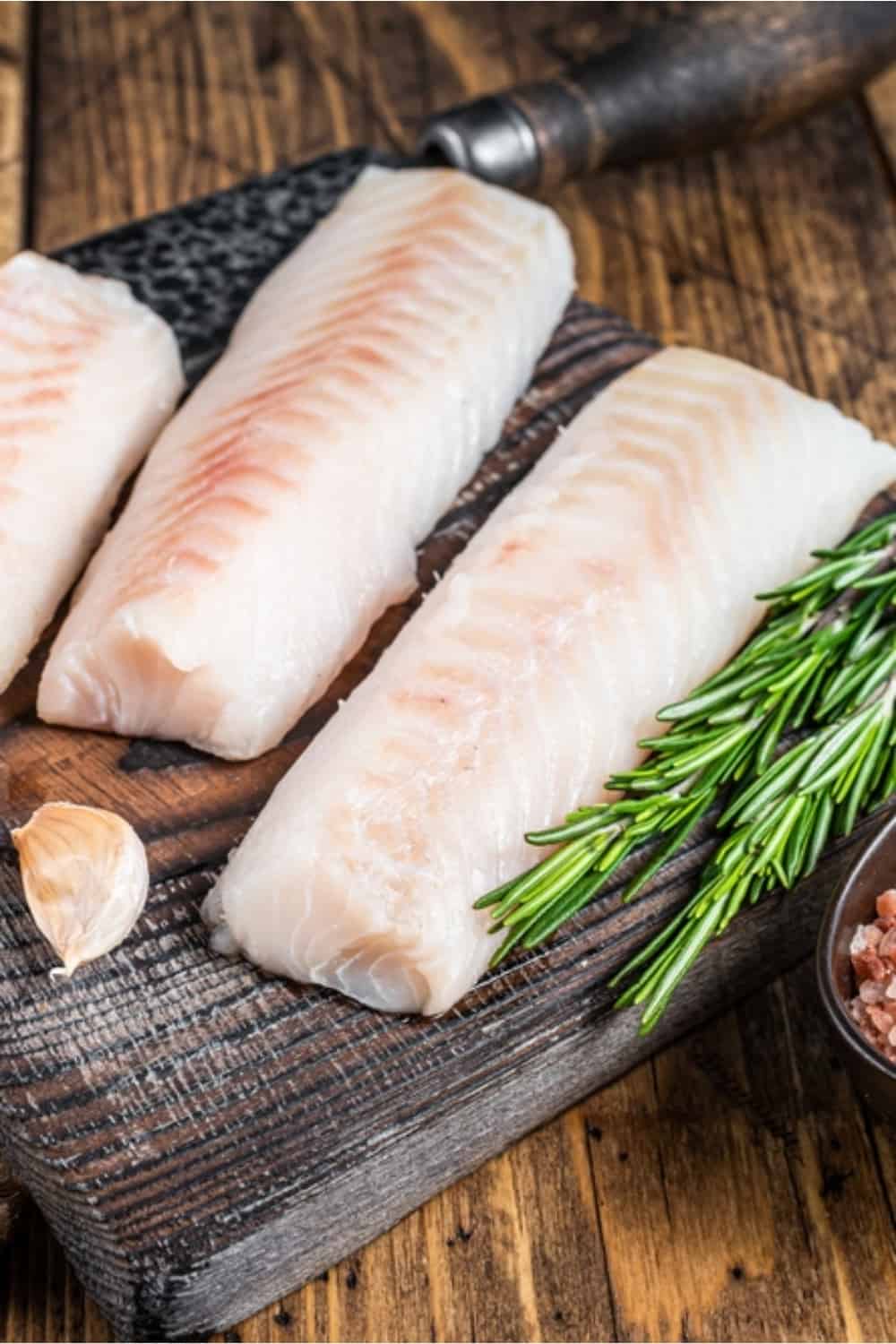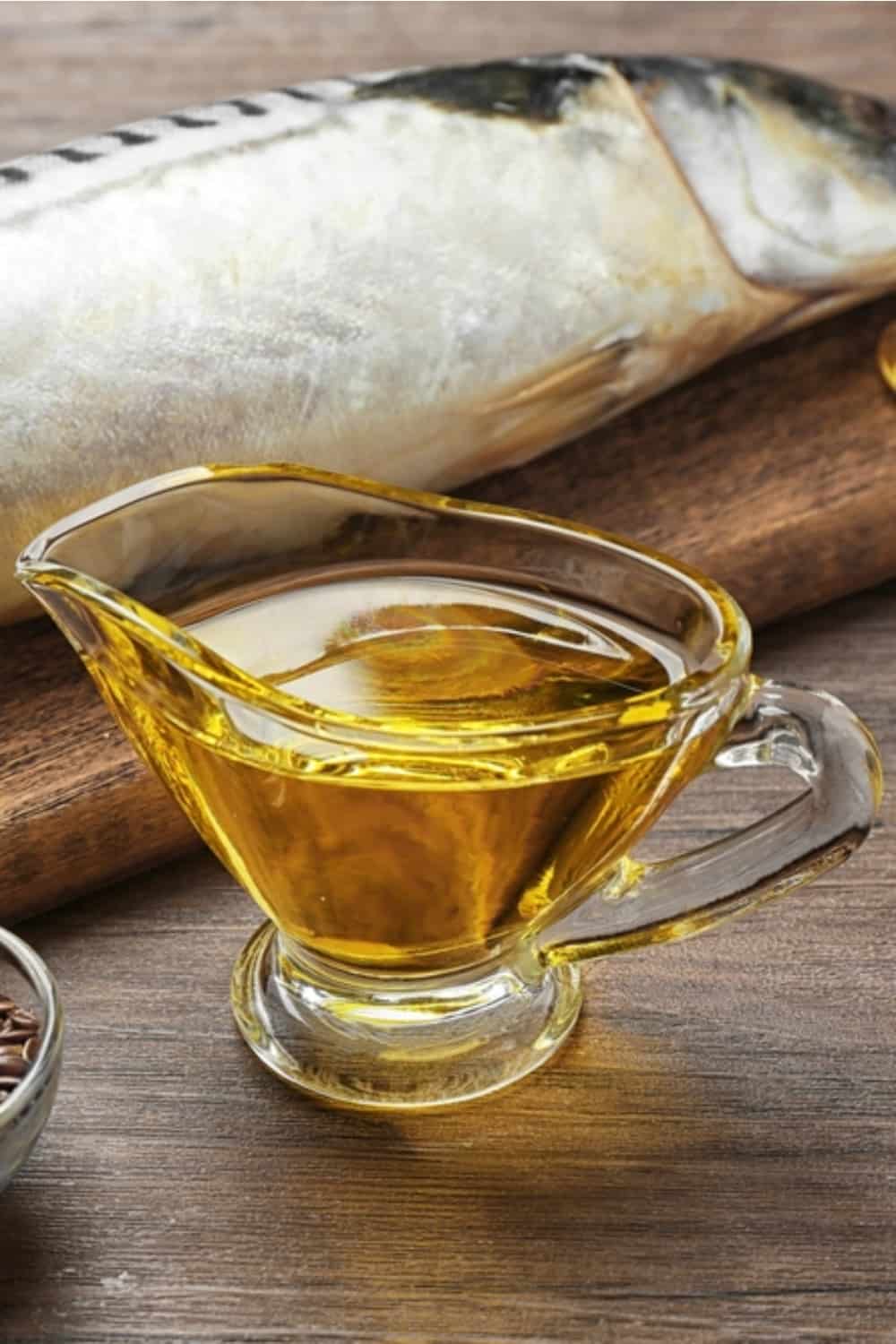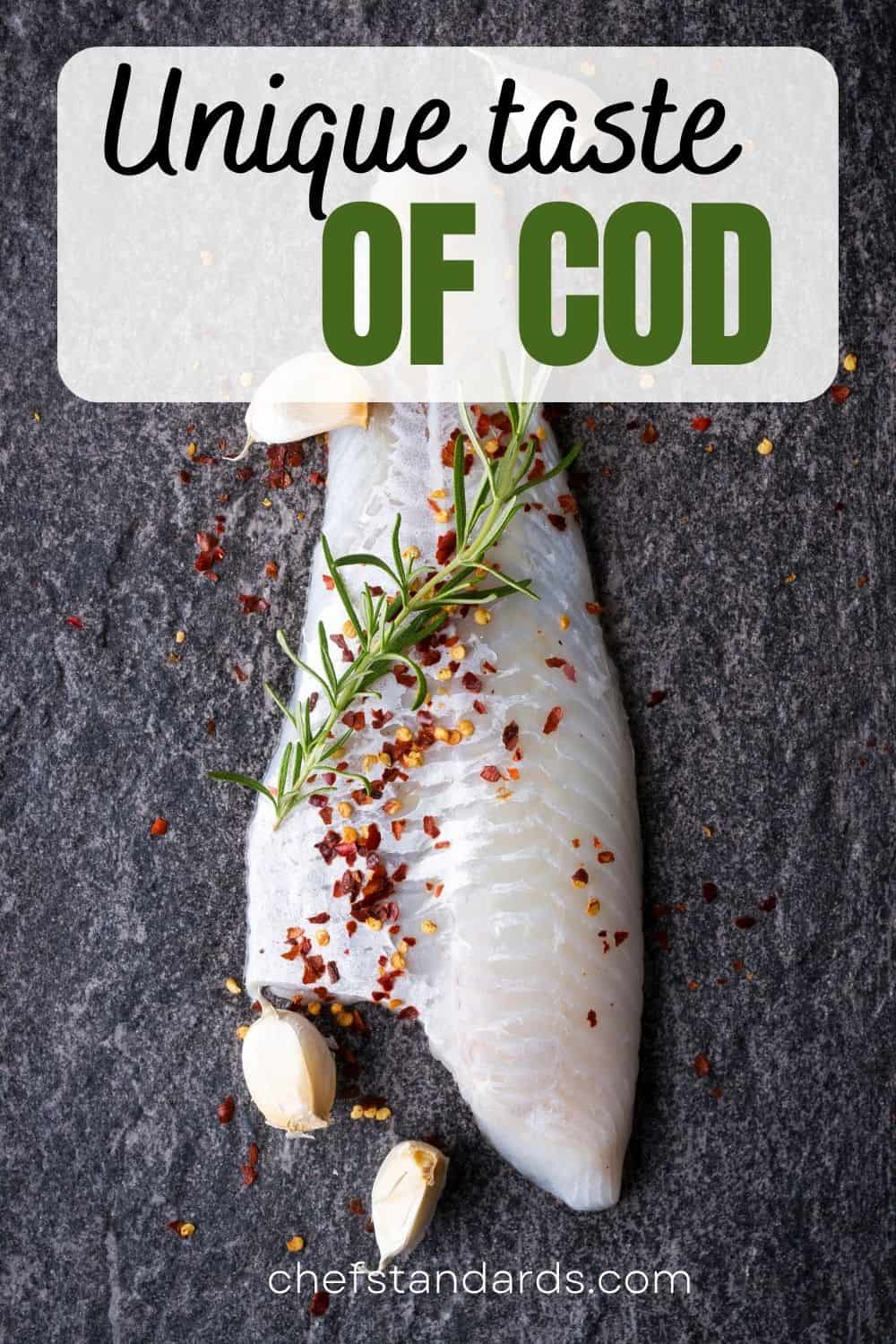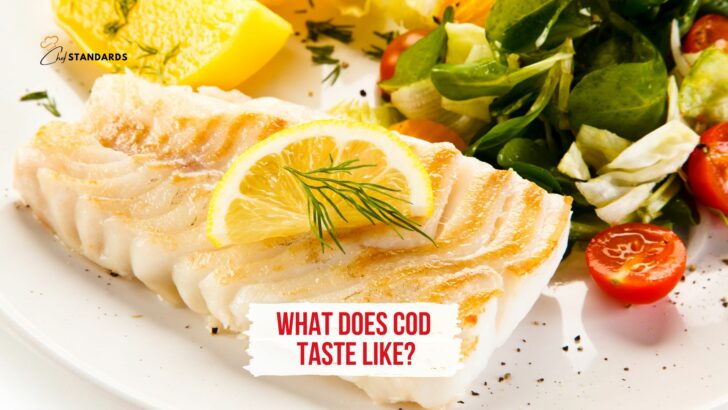Fish has never been my cup of tea. I am more of a meat person, enjoying everything from chicken to pork.
However, there is one type of fish that I like to enjoy from time to time. Yes, I am talking about cod, and the main reason that I sometimes incorporate it into my daily menu is its mild taste and high nutritional value. The texture is also quite nice.
But, what does cod taste like exactly? Well, in this article, you will be able to find out all the flavorful secrets about cod, as well as some other interesting facts in general, and how to enjoy its great flavors.
Let’s dive in.
What Does Cod Taste Like?

Cod is one of the most popular types of fish. It comes from the family Gadidae and belongs to the Gadus genus. Cod has a spotted body with a grayish-to-green color.
Although there are many types of cod, two main types include Atlantic and Pacific cod.
Those are some of the general facts about cod worth knowing. Now we can start talking about the main thing, namely the flavor profile of cod.
Flavor
I have already mentioned in the introduction that the main reason that I sometimes enjoy eating cod is its quite mild flavor.
However, aside from the mildness, its sweet and delicate flavor with a subtle briny taste due to its saltwater habitat is something that you will experience when eating cod.
That is an excellent combination of flavors, but everybody’s preferences are different, so it is up to you to decide whether or not you will give it a try.
Finally, I have to say that the taste of cod is generally less assertive than some other types of fish, such as the taste of salmon or tuna. This is a good choice for those of you who are not so much into fish but still want to give it a try.
However, this mildness can also make cod susceptible to being overpowered by strong seasonings or sauces, so take that into consideration as well.
Texture
When it comes to the texture of cod, I can freely say that it is firm and meaty, but delicate and flaky at the same time.
That firmness and meatiness are due to a low-fat content, which is also the cause of the very mild flavor.
The flesh of cod is composed of small, tightly packed flakes that hold together well when cooked but are also easy to separate with a fork (both salad fork and dinner fork).
So, when cooked, cod has a moist, tender texture that is slightly chewy. However, the exact texture depends on the way the fish is prepared, which I will explain later in the text in more detail.
In the end, I also have to emphasize that the texture of cod can also be influenced by other factors such as its age, diet, and habitat.
For example, older cod can have a tougher, more fibrous texture than younger fish, and cod that has been caught in deep, cold water can have a firmer texture than one caught in warmer waters.
Aroma
Just like flavor, the aroma of cod is relatively mild and subtle, with a slight briny or oceanic scent that comes from the fish’s saltwater habitat.
Personally, I would describe it as fresh and clean with a subtle sweetness to it.
And I can also freely say that the aroma is definitely less assertive than that of some other stronger-smelling fish, like raw tuna or salmon, for example.
The aroma can also be influenced by factors such as the fish’s diet, habitat, and freshness.
Fresh cod has a clean, slightly sweet smell that is sometimes described as resembling cucumber or melon.
However, as the fish gets older, its aroma can become stronger and more pronounced, with a slightly fishy odor that can be off-putting to some people.
Does Cod Have a Fishy Taste?
When I am talking about cod with people who are not that into fish, I frequently hear this question. And that is really no surprise since a strong fishy flavor can really be unpleasant, especially for people who try fish for the first time.
Fortunately, I have some good news.
Although it can not be said that it is entirely free from that fishiness, cod is actually considered the “least fishy fish”.
This is mainly due to its low-fat content, as fish that are high in fat tend to have a stronger, more distinctive taste. Other factors such as habitat, diet, and freshness also play an important role.
Namely, fresh cod that is properly handled and stored will have a less fishy, more delicate taste, compared to fish that has been stored for a longer period of time or not handled correctly.
I will also say that, from my own tasting experience, fresh cod tastes somewhat more like chicken than fish really. This is probably due to the higher protein content, and consequently firmer and meatier flesh.
What About Popular Cod Liver Oil?

One of the most popular by-products of cod is definitely the oil extracted from its liver, also known as cod liver oil.
Due to its high nutritional value, it is widely used for medical purposes all over the world, i.e., cod liver oil is high in omega-3 fatty acids, vitamins A and D, and other nutrients.
Cod liver oil is typically extracted from the livers of Atlantic cod (Gadus morhua) or Pacific cod (Gadus macrocephalus) through a process known as steam rendering.
The liver is heated to a high temperature, which causes the oil to separate from the other tissues and solids in the liver. The oil is then filtered and refined to remove impurities and improve its quality.
When it comes to flavor, cod liver oil, unlike cod itself, can have a stronger fishy flavor, especially if the producer didn’t add any flavorings.
Fortunately, many manufacturers add flavorings to cod liver oil or mix it with other oils, such as lemon or orange oil to make it more palatable. It also comes in capsules, which can mask the taste and odor of the oil.
If you want to know what are some amazing health benefits of cod liver oil, check this video below.
Atlantic Vs Pacific Cod Flavor Profile
There are two main types of cod: Atlantic cod and Pacific cod. Although they are very similar, especially in flavor and texture, there are some differences that I want you to know about.
Namely, the Atlantic cod is a type of cod that is very mild with a more dominant sweet flavor. Aside from the slight sweetness, a subtle, buttery taste is something that you can experience when eating it.
The texture of Atlantic cod is quite delicate and flaky.
Pacific cod, on the other hand, has a slightly stronger, meatier flavor compared to Atlantic cod. Its flesh is firmer and denser, with a slightly chewy texture.
Although it has a subtle sweetness to it, Pacific cod is more savory in flavor, with slightly nutty or earthy undertones.
How To Enjoy The Best Flavors Of Cod?

One of the great advantages of cod is the fact that it can be used in various delicious ways. From popular fish and chips to flavorful fish cakes, cod can solve it all.
• Fish and Chips: One of the most popular ways to prepare cod is in the classic British dish of fish and chips. The cod is battered and deep-fried, then served with chips (fries) and a side of tartar sauce.
When you make fish and chips with cod, they will have a mild, delicate flavor with a slightly sweet finish.
The cod itself has a subtle, buttery taste that pairs well with the crispy, salty batter used when preparing the fish and chips. The batter provides a crunchy texture that contrasts with the tender, flaky flesh of the fish, which many people find appealing.
If you want to fully enjoy this fish classic, I would suggest you pair it with some Kennebec fries, tartar sauce, and a side of coleslaw for a classic and flavorful combination.
• Baked or Grilled Cod: One of my favorite ways to prepare and cook cod is to bake or grill it with a variety of seasonings and sauces, such as lemon and butter, garlic and herbs, or a spicy tomato sauce.
When baked or grilled, cod mostly retains its natural flavors with the addition of a smoky taste from the cooking process, and various other flavors from spices and seasonings.
• Poached or Steamed Cod: When you poach or steam cod, it will mainly retain its natural flavors, i.e. delicate and subtle flavor with a slightly sweet finish, especially if you are using Atlantic cod.
When using this method, cod is typically cooked in a broth made from white wine, herbs, or ginger, which infuses it with a subtle depth of flavor.
The texture is tender and moist, as well as flaky and meaty, which is perfect for absorbing the flavors of the cooking liquid.
• Salted Cod: In some cuisines, such as Portuguese and Caribbean, salted cod is a popular ingredient. The cod is preserved in salt, then soaked and rehydrated before being used in dishes such as stews, fritters, and salads.
Salted cod, also known as bacalao, has a distinctly salty and savory taste. The fish undergoes a salt curing process that gives it a unique flavor that is different from fresh cod.
The texture of salted cod is also different from fresh cod, as it becomes denser and more firm during the curing process.
• Fish Cakes: My final recommendation for using cod is making fish cakes from it.
Fish cakes are a type of savory dish made from fish and various other ingredients, most often mashed potatoes, breadcrumbs, and seasonings, then forming the mixture into patties or balls and frying or baking them.
Fish cakes made from cod have a mild and delicate flavor, with a slightly sweet finish. When properly cooked, fish cakes made with cod should have a crispy exterior and a moist and tender interior, which is really a perfect combination.
If you are on some type of low-carb diet or keto, then take a look at this video that will show you how to quickly make a simple low-carb cod recipe.
What Does Bad Cod Taste Like?
As it is really important to know what the flavor and texture of fresh cod is, it is even more important to know it for bad or spoiled cod.
Namely, bad cod will have a noticeably different flavor and texture from fresh cod. If your cod is spoiled, the first sign that you will notice is a strong, unpleasant odor, which may be described as sour, putrid, or rancid.
The flesh may also have a slimy or sticky texture and appear discolored or opaque instead of firm and translucent.
But what about flavor? Well, bad cod may taste sour, metallic, or off-puttingly bitter. It may also have a soft or mushy texture and lack the firmness and meatiness of fresh cod.
This is very important to know because eating bad cod can lead to food poisoning or other health issues, so it is important to discard any fish that shows any signs of spoilage.
Cod Flavor Profile Compared To Other Similar Fish

Finally, in order to provide you with an even bigger picture of the cod flavor profile, I decided to compare it with some other similar types of fish.
Namely, there are a few fish types whose flavor is similar to that of cod, so it is not out of hand to familiarize yourself with the differences and similarities.
Haddock
Haddock and cod are both members of the same cod family, so it is no surprise that they are quite similar in many things, including flavor and texture. However, there are some main differences that need to be discussed.
Both types of fish are quite mild in flavor, but haddock is a little bit fishier in terms of flavor. Aside from that, it is also sweeter, so it is more similar to Atlantic cod.
When it comes to texture, haddock also has a firm texture, but it is a little firmer than cod. However, once you cook it, it becomes more tender than is the case with cod.
This is very important to know when you are deciding which type of fish you will choose when planning your next dish.
Pollock
Pollock and cod are both white fish that are similar in appearance and are often used interchangeably in recipes. But there are some differences you need to be aware of.
Although both are mild in flavor, pollock is a little milder. Aside from that, it also has a less sweet flavor than cod, especially when compared with Atlantic cod.
The important thing to know when cooking one of these two types of fish is that pollock tends to lose its shape a lot quicker when overcooked.
Cod meat, on the other hand, is a little firmer, but still flaky and tender when prepared correctly.
Halibut
Again, halibut is another white fish and because of that, it shares many similarities with cod.
However, halibut, although quite mild as well, has a bit stronger flavor that is slightly sweet and buttery.
It has a dense, meaty texture that is also firm but less flaky than cod. So when choosing between these two types of fish, the firm texture of cod makes it a good choice for dishes that require the fish to hold its shape.
Halibut’s dense, meaty texture is more suitable for dishes that call for a heartier texture, such as pan-seared or roasted halibut.
Tilapia
If you really don’t like that fishy taste, even if it is very close to zero, then tilapia is definitely your best bet.
Namely, tilapia’s flavor is even milder than that of cod, but since it is also less popular, cod got the crown of the “least fishy fish”.
Because it has a lower fat content, tilapia also has a firmer texture, and it remains quite firm even when it is cooked.
However, unlike cod, its meat tends to fall apart into smaller flakes once it is cooked, which is very important to know for your future fish-cooking endeavors.


